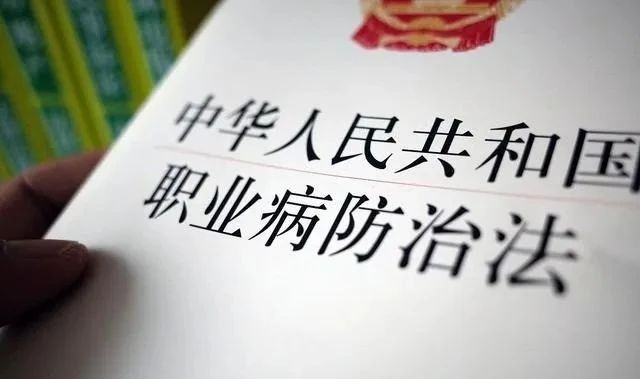Gaoma safety | Selection of respiratory protective equipment
Release time:
2023-09-20
No one should be exposed to an air environment that can or may be hazardous to health without protection According to the relevant national occupational health standards, the air pollution situation in the operation should be evaluated, the nature of the harmful operating environment should be identified, and the degree of harm should be determined First, consider the possibility of taking engineering control measures to control occupational hazards at the source. If engineering control measures cannot completely eliminate the harm of chemical poisons, appropriate respiratory protective equipment should be selected according to the regulations Respiratory protective equipment that is recognized by the state, meets the requirements of the standard, and meets the applicable conditions should be selected
Selection of respiratory protective equipment
Principles of selection of respiratory protective equipment
No one should be exposed to an air environment that can or may be hazardous to health without protection
According to the relevant national occupational health standards, the air pollution situation in the operation should be evaluated, the nature of the harmful operating environment should be identified, and the degree of harm should be determined
First, consider the possibility of taking engineering control measures to control occupational hazards at the source. If engineering control measures cannot completely eliminate the harm of chemical poisons, appropriate respiratory protective equipment should be selected according to the regulations
Respiratory protective equipment that is recognized by the state, meets the requirements of the standard, and meets the applicable conditions should be selected
Ø Selection process of respiratory protective equipment
Selection basis of respiratory protective equipment
Choose according to the pollution of harmful substances
Select according to the operation condition
According to the operator selection
1
Choose according to the pollution of harmful substances
Identification of hazardous substances in the workplace
Ability to identify hazardous operating environments
Working environment is hypoxia and oxygen concentration value
The presence of hazardous substances and their concentrations in the working environment
The presence of hazardous substances in the working environment
The presence of hazardous substances in the working environment
Particulate matter: Know its status (solid or liquid), boiling point and vapor pressure, volatility at operating temperature, radioactivity, dispersion, occupational health standards, immediate threat to life and health (IDLH) concentration, skin absorption, and skin sensitization, irritation or corrosion
Gas or vapor: Understand its odor threshold, occupational health standards, IDLH concentration, skin absorption, and skin sensitization, irritation or corrosion
Classification of hazardous working environments
Based on the identification and judgment of the pollution of hazardous substances present or produced in the air of the workplace, the working environment can be divided into IDLH environment and non-IDLH environment
Factors to be considered in the assessment of harmful environment
IDLH environment
Conditions that can cause immediate death or incapacity to escape, or permanent health damage to a worker who is not adequately protected by respiratory protection, include:
An environment where the types and concentrations of hazardous substances in the air are unknown
An environment that is hypoxic or at risk of hypoxia
An environment where the concentration of hazardous substances reaches IDLH concentration
optional
Equipped with full-mask positive pressure air breathing apparatus (SCBA);
Positive pressure air supply breathing apparatus equipped with a full-face hood or an air supply hood, provided that suitable auxiliary escape breathing apparatus is provided
Non-idlh environment
Non-idlh environment refers to the operating environment is not hypoxic, the nature of harmful substances is known, and the concentration of harmful substances does not exceed the IDLH concentration
The evaluation index of non-IDLH environmental hazards is hazard factor
optional
Select a respirator with a specified protection factor (APF) greater than the hazard factor
APF of various types of respiratory protective equipment
Depending on the type of hazardous substances in the air
Choose respiratory protection
Protection against particulate matter:
-- Isolation or filter respirators are available
① If the filter type is selected, the following matters should be noted:
Anti-particulate respirators are not suitable for the protection of volatile particulate matter, and filter respirators that can filter both particulate matter and volatile gases should be selected
The suitable anti-particulate respirator should be selected according to the dispersion of particulate matter
② If the filter type is selected, the following matters should be noted:
If the particulate matter is liquid or oily, a filter respirator with a suitable filter element should be selected
If the particulate matter is radioactive, the anti-particulate respirator with the highest filtration efficiency should be selected
Goma self-priming filter gas half mask 1900 series
Protection against toxic gases and vapors:
-- Isolation or filter respirators are available
① If the filter type is selected, the following matters should be noted:
The appropriate filter element should be selected according to the type of toxic gases and vapors, and the type of filter element not included in the current standard system should be selected according to the instructions provided by the respirator manufacturer
For toxic gases or vapors with no or poor warning, preference should be given to respirators with failure indicators or isolated respirators. If the filter respirator does not have a failure indicator, consult the manufacturer to find out the suitability of the filter element for a particular gas or vapor and how to predict the duration of protection under certain conditions
Goma self-priming filter gas comprehensive 1608-A series
Simultaneous protection against particles, toxic gases or vapors:
- Isolated or filtered respirators can be selected for workplaces where particles, toxic gases or vapors are present simultaneously. If filter type is selected, an effective filter element or combination of filter elements should be selected
Goma self-priming filter gas comprehensive 1011-A series
2
Select according to the operation condition
Respiratory protective equipment should also be considered
Different characteristics of operating conditions
1, if the harmful substances in the air can stimulate the eyes or skin, or can be absorbed through the skin, or is corrosive to the skin, should choose a full mask respirator, and take protective measures to protect other exposed skin
(2) If there is a foreseeable emergency danger in the operating environment, the appropriate emergency protective equipment should be selected according to the nature of the danger
3, if the operating environment has the risk of explosion, the use of air breathing apparatus, should pay attention to only choose the air breathing apparatus, but not the oxygen breathing apparatus, choose the power supply air filter breathing apparatus, should choose the intrinsically safe type (an explosion-proof type of electrical equipment) motor
4, if you choose the air supply breathing apparatus, you should pay attention to the distance between the operation site and the air supply source, the impact of the air duct on other operators on the site, and the damage of the air supply pipeline
5. If there are adverse meteorological conditions such as high temperature, low temperature or high humidity in the working environment, or organic solvents and other corrosive substances, high temperature, low temperature or corrosion resistant respirators should be selected, or air supply respirators that can adjust temperature and humidity should be selected
6, if the operation intensity is large, or the operation time is long, should choose a respirator with low respiratory load, such as air supply or power supply air filter respirator
7, if you need clear vision during the operation, you should choose a respirator with a better field of view
8, if the operator has language communication needs, should choose a respirator that does not hinder its communication
3
According to the operator selection
Cephalic facial features
When choosing a half mask or a full mask, the following matters should be noted:
If the respirator manufacturer or distributor can provide the user with a fitness test, it can help the user choose the suitable close-fitting mask
Facial hair or long hair will affect the tightness between the mask and the face, and users should shave in advance to avoid the hair between the mask and the face skin
The facial features of the user should be considered. If the close fit of the face and the mask is affected by scars, sunken temples, very prominent cheekbones, skin folds, nose deformity, etc., a mask unrelated to facial features should be selected
comfort
The operating environment should be evaluated to determine whether the operator can withstand the additional discomfort caused by the respirator, and try to choose protective equipment that can reduce the discomfort of the operator and wear comfort
Vision correction
Corrective eyewear should not affect the respirator's adhesion to the face
A medical condition unsuitable for the use of respiratory protective equipment
Physiological factor
If the respiratory protective equipment is bulky, the cardiopulmonary system of people engaged in heavy physical labor will bear a great load; If people with lung disease use self-priming respiratory protective equipment (such as self-priming filter or self-priming air supply), breathing difficulties will also become a prominent problem
It is generally believed that workers suffering from pulmonary obstructive diseases, obvious arrhythmia or organic heart disease, high blood pressure above grade II, claustrophobia and spontaneous pneumothorax and other physical or psychological disorders are not suitable for the use of respiratory protective equipment
Psychological factor
The use of full-face masks, pneumatic hoods, and full-body containment can cause anxiety, fear, and isolation in some people, making it impossible for them to function normally









